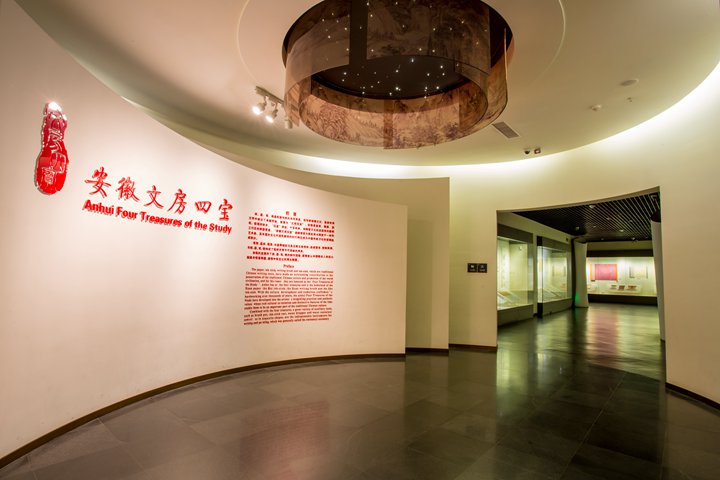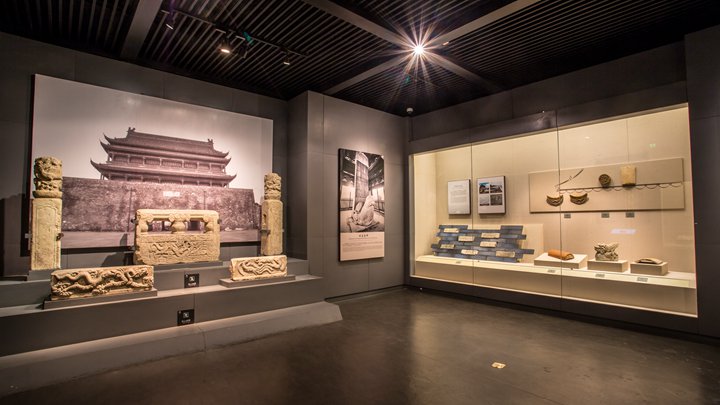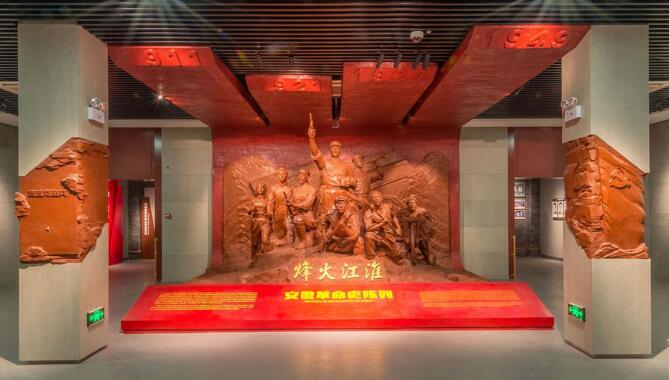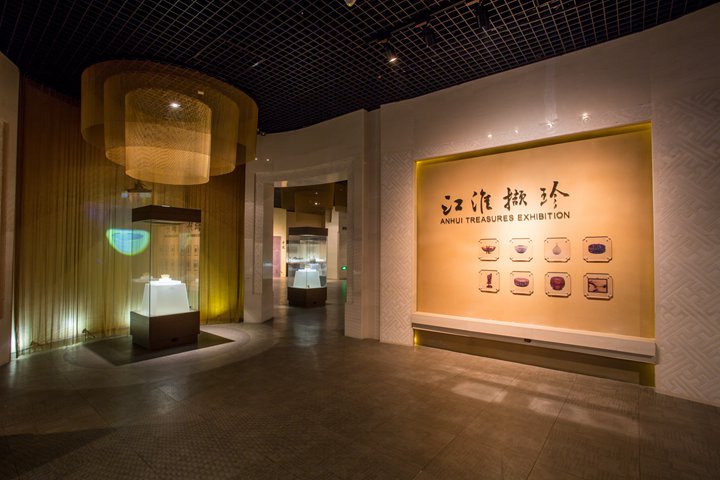Huizhou Vernacular Architecture
- Anhui Museum
- Time:2021-02-02 11:08
Ancient Huizhou, as a prefecture with six counties under its jurisdiction, was endowed with unique geographical environment and historical relics, and gave birth to its own culture of distinction, i.e. Huizhou Culture. Huizhou vernacular architecture, which found its root in the Huizhou Culture, is a shining gem with a distinctive regional style among other vernacular buildings of China. Ancient buildings in Huizhou were all erected in pursuit of "the oneness between man and nature." They were generally arranged in conformity to the terrain and with the natural creations in full use. Featuring rigorous spatial planning and exquisitely carved components, they are typically represented by civilian dwellings, ancestral halls and memorial arches, which are collectively hailed as the three gems of ancient Huizhou-style architecture. Whitewashed walls, dark tiles, high ridges, cornices, stacked courtyards, winding corridors, pavilions, waterside pavilions and other landscapes, which are commonly seen with those buildings in Huizhou, have turned the ancient land into a picturesque village on the canvas, depicting the harmony between man and nature. Whenever one stops among those ancient buildings, he/she may "see mountains and waters on this land, and bring back a homesick memory."
Historical evolution of Huizhou
Huizhou was located in the southern part of Anhui Province, sitting at the junction of Anhui, Zhejiang and Jiangxi provinces. It was called Xin'an and Shezhou in ancient times. In the third year of Xuanhe Reign in the Northern Song Dynasty (1121 AD), Shezhou was renamed Huizhou, hence the origin of the name. Ancient Huizhou was a prefecture with six counties under its jurisdiction, that is, Shexian, Yixian, Xiuning, Qimen, Jixi, and Wuyuan. The prefectural government was seated in Huicheng Town of She County. The prefectural establishment lasted for nearly 800 years until 1912 when it was demoted to a county establishment. After the founding of the People's Republic of China, there came the sub-provincial administrative region and the prefecture successively in Huizhou. In 1987, Huizhou Prefecture was abolished and replaced by Huangshan City, which exercises jurisdiction over Shexian, Yixian, Xiuning and Qimen counties. Jixi County is now administered by Xuancheng City, Anhui Province while Wuyuan County is subsumed under Shangrao City, Jiangxi Province.
Great landscape of Xin'an
Huizhou is dominated by mountains and hills, with towering peaks and staggered ridges and valleys in the territory. The Mount Huang in the north, together with the Mount Baiji in the east that connects the Mount Tianmu from the north to the south, constitutes the natural boundary between Anhui and Zhejiang, while the Mount Wulongstands between Xiuning and Wuyuan. The Changjiang River and the Le'anjiang River run southwestwards into the Poyang Lake; the Huangpen River, the Qiupu River, the Qingyijiang River, and the Shuiyangjiang River flow northward into the Yangtze River. The Xin'an River is the largest water system in Huizhou. It collects tributaries such as the Shuaishui River, the Hengjiang River and the Lianjiang River at the Pukou Village, Tunxi Town and then flows southeastwards into the Qiandao Lake in Chun'an, Zhejiang Province. Then the river water flows on and joins the Fuchun River and the Qiantang River before it is finally embraced by the East China Sea. This riverway was also one of the routes that merchants of ancient Huizhou used to trek along by boat.
The origin of Huizhou Culture
The Huizhou region, generally surrounded by mountains, was relatively isolated from the outside, an ideal place far from spoiled by wars in ancient times. As early as the Spring and Autumn Period and the Warring States Period, it was populated by the ancient Shanyue tribe who slashed and burned for a living. After the Qin and Han dynasties, the aristocratic families from the central part of ancient China moved southwards and settled in Huizhou at different times in order to avoid the war turmoil. They brought advanced technology and culture. Their integration with the local Shanyue culture gradually grew into a distinctive regional culture -- Huizhou Culture over generations that spanned from the Qin and Han Dynasties to the Sui and Tang Dynasties.
Huizhou Culture emerged in the Song Dynasty and reached its peak during the Ming and Qing Dynasties. Huizhou people lived generally with their clan mates. They upheld Confucianism, attached importance to education, and stayed aggressive and endurable. The reality with more mountains and less farming lands put them in a disadvantageous position to earn their bread and accordingly forced them to go out for a living. Hence there came the rise of Huizhou merchants in the Ming and Qing Dynasties. Dealers as they were, Huizhou merchants were Confucianism followers. What they did to their hometown contributed to the prosperity of Huizhou Culture. During the Ming and Qing Dynasties, Huizhou Culture demonstrated a splendid look and manifested itself in diversified areas such as education, Xin'an Neo-Confucianism, Xin'an Painting School, prints, seal cutting, architecture, Xin'an medicine as well as natural science, mathematics, Huizhou opera, and Hui cuisine. Huizhou Culture was rooted in the local but not limited to Huizhou. It has been continuously developed and spread by Huizhou people, showing a high degree of openness and strong cohesion.
Editor:Xiaqing
News
-
2019 topics
-
2018 topics
-
2017 topics
-
2016 topics
-
2015 topics
-
2014 topics
-
Our hospital to carry out the law of contract specific legal knowledge training
-
"Our development" promoting mandarin, standard Chinese Business training
-
The provincial museum grading evaluation class Held in hefei
-
The grading organize employees to participate in the province of anhui museum museum training






